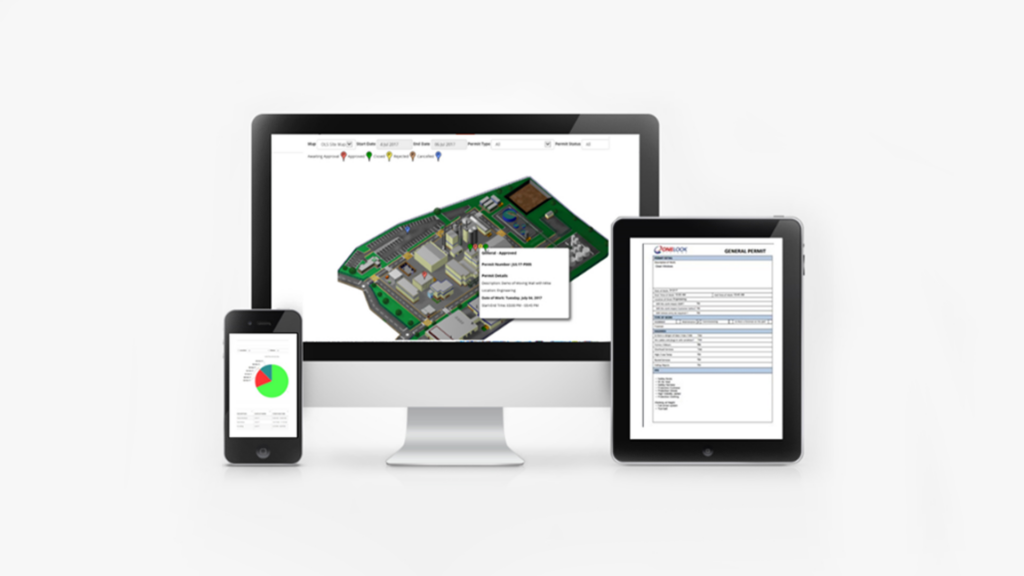In a world where everything is becoming faster, more efficient and “lean,” the world of environmental, health and safety is beginning to move with the times. Permits to Work are nothing new in the EHS world. Designed to act as a control for certain types of work, they’re a way of ensuring that site safety is kept to the highest level and only qualified personnel are carrying out jobs, especially high risk jobs such as hot work (e.g., welding, brazing, torch cutting), work in permit to enter confined spaces, or maintenance work on equipment in which employees need to follow control of hazardous energy (aka “lockout/tagout”) procedures. For this reason, they’re important area of Control of Work — a formal process for improving oversight over work with a higher potential for accidents and injuries.
In some cases, formal Permit to Work procedures directly support regulatory compliance. For example, in the US, OSHA requires employers to control and monitor access to confined spaces containing hazardous atmospheres (permit to enter confined spaces), and to issue authorizations for any hot work to be performed on site. The situation becomes more complicated when contractors are involved, because a company may use many different contracted services over time, and host employers need to ensure that all representatives of the contracting company have the right qualifications and awareness of site policies and procedures before beginning work.
Global experts and stakeholders increasingly recognize the challenges of managing safety at multi-employer worksites. For example, ISO 45001, the international standard for occupational health and safety (OH&S) management systems, states that employers need to include contractors in their workplace safety management practices. Additionally, OSHA’s Temporary Worker Initiative (TWI) spells out the agency’s expectation that host employers jointly share responsibility for employee safety with temp agencies and other external sources of labor when employees from these companies are working at the host employer’s job sites. OSHA also states that host employers in many cases may have to record occupational injuries and illnesses for temporary workers and contractors on Forms 300, 300A and 301 if those employees receive their daily job instructions from representatives of the host employer’s company.
How Does an Electronic Permit to Work System Help?
Technology is steadily helping to improve safety in the workplace, and ePermits To Work are an exciting innovation that are quickly surpassing traditional paper permits, especially for organizations who process a high volume of permits or who manage a lot of contractors and sub-contractors on site on a daily basis.
The advantages over paper are pretty clear to see:
- Enhanced Control and Visibility – Allows users to view all permitted work that is taking place on site, as well as identify permit conflicts and non-compliance.
- Integrated Safety – Allows users to ensure that work is compliant to the exact standards laid out in a company’s EHS policy.
- Reduced Costs / Reduced Administration / Time Saving – Saves hours of time on administrative permit tasks.
- Important Information Instantly Accessible – Users can see all contractor information from a single screen pre-permit submission; Identify contractor qualifications, induction, insurance & easily see if details are still valid.
More and more companies are moving to electronic solutions—and not just for permitting. Many different functions of business, including HR, Supply Chain, Operations, Sales, Marketing, have found benefits and efficiencies in moving towards electronic solutions to help them with their daily tasks. Paper is quickly becoming outdated and insufficient for end users.
What is The Future of Permit to Work?
Risks will always exist, and we can’t expect an EHS manager to always have everything under complete control. With VelocityEHS Permit to Work software, you can mitigate risks and improve your site safety to avoid hazardous work conditions and dangerous accidents.
Using an electronic permit to work system ensures that all permit work is completed safely, in compliance and only by qualified workers, making it easy to protect your employees. As technology continues to evolve at such a rapid rate, expect electronic permit to work systems to be at the forefront of health and safety management in the years ahead.
